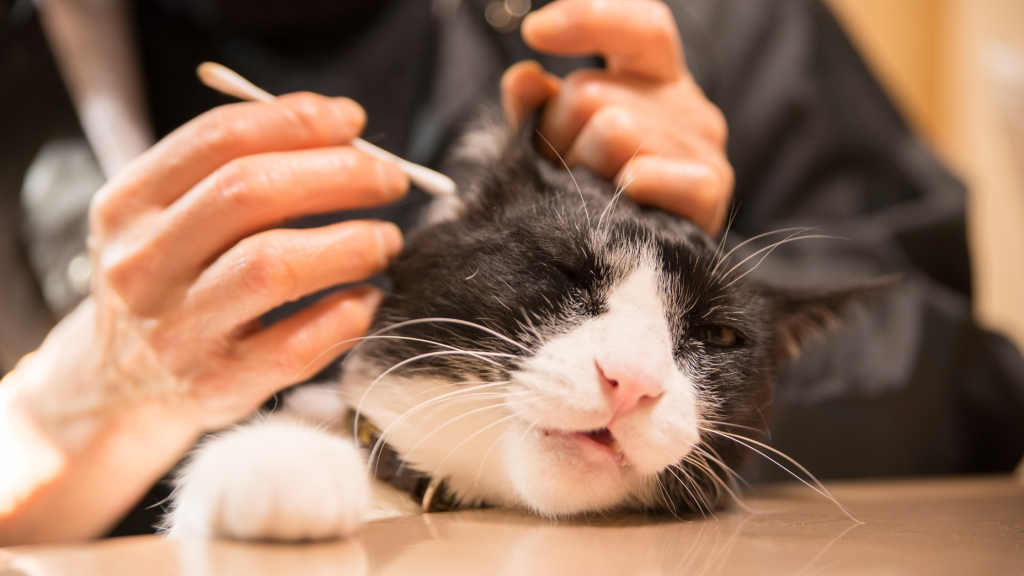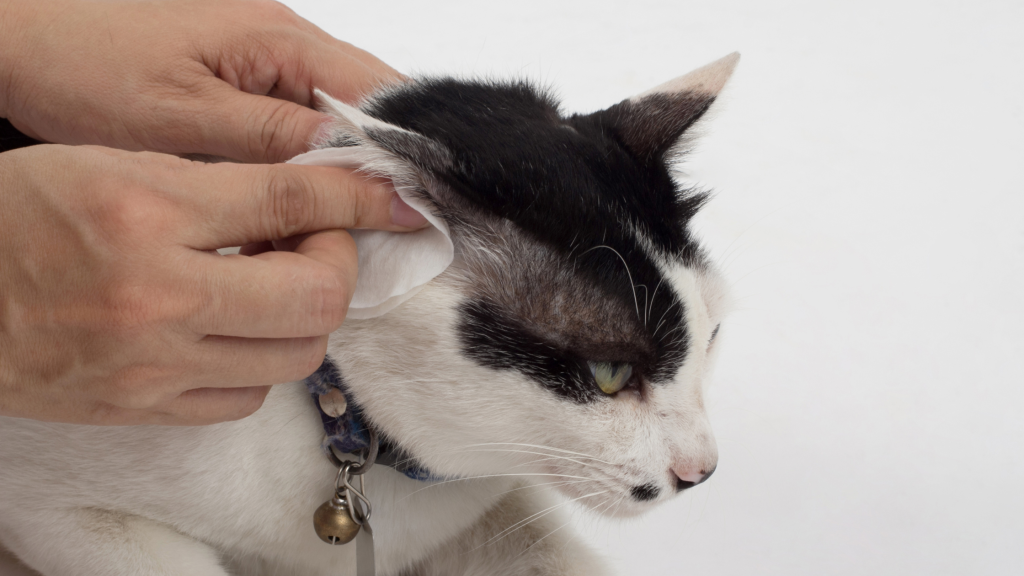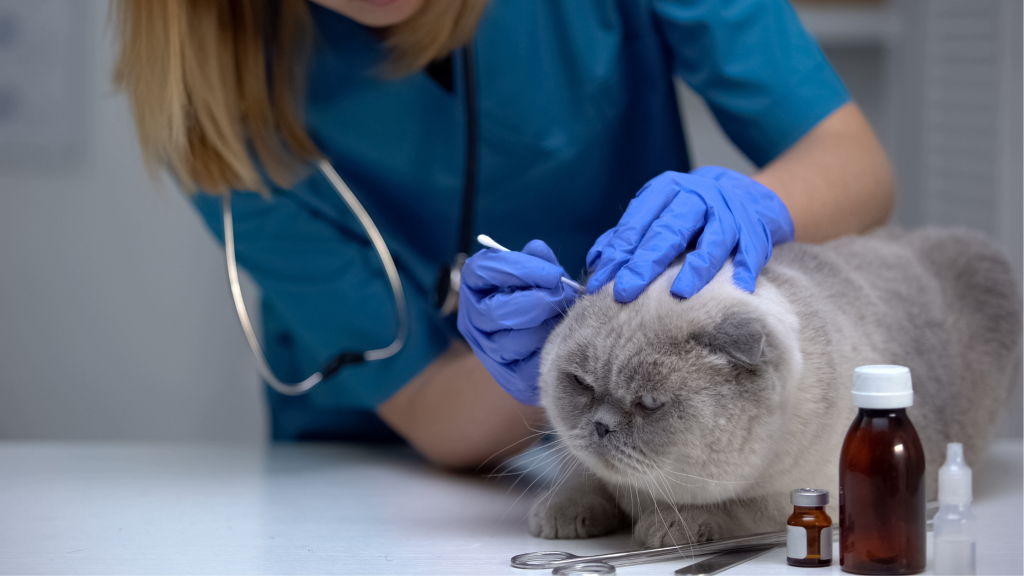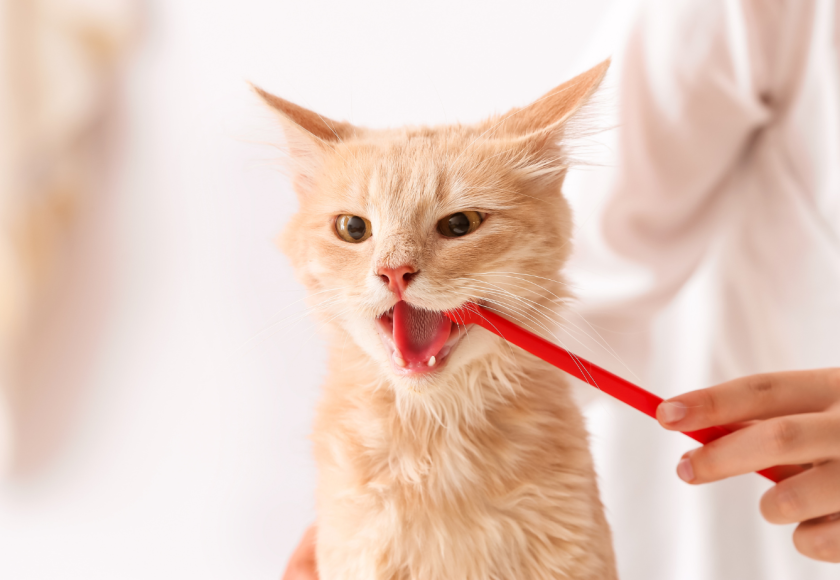Cat ear diseases can be challenging for cat owners, as their beloved pet may feel uncomfortable or experience pain during cleaning and treatment. Owners’ understanding of various diseases, their symptoms, diagnosis, and treatment options is essential to ensure the well-being of cats.
Table of contents
Causes of ear diseases in cats
Cat ear diseases can vary from simple inflammation to severe infections or even tumors. The most common diagnoses in veterinary clinics are:
Inflammation
Cat ears are sensitive to various bacteria and fungi that can cause inflammation. When cats have ear inflammation, their ears become red, the tips of their ears may droop, and they try to scratch them and shake their heads.

Parasites (ear mites in cats)
Ear mites are one of the most common causes of ear disease in cats. It is a parasitic infection caused by a species of small mite, most commonly Otodectes cynotis. Ear mites can cause severe itching, inflammation, and even skin damage. Cats begin to experience pain in their ears and may rub or scratch them, sometimes causing bleeding or even infection.
Cat ear mites are diagnosed by examining ear discharge under a microscope at a veterinary clinic. Treatment for cat ear mites includes topical and systemic medications. Cat ear mite medications, such as ear drops or ointments, are used directly to clean and treat the ears.

Treatment for ear mites in cats can only be prescribed by a veterinarian. In addition, systemic medications such as tablets or injections may be prescribed to help fight secondary bacterial or fungal infections in the ears.
It is important to start treating ear mites in cats as soon as possible and to ensure that the treatment is prescribed by a veterinary clinic, as incorrect or incomplete treatment can lead to recurrence of the infection or complications. It is also important to clean the environment properly to remove ear mite eggs from the cat’s environment: beds, litter boxes, etc. To prevent new infections, it is recommended to regularly check and clean your cat’s ears and use parasite control products.
Tumors
Rarer but very serious diseases, such as ear canal polyps, malignant tumors, or cancer, can affect cats’ ears. These types of ear diseases in cats can only be diagnosed by a veterinarian—a specialist with an otoscope, which allows them to examine the cat’s ear canal more deeply.
Symptoms of ear diseases in cats
The symptoms of ear diseases in cats can vary greatly depending on the nature and severity of the disease. Some of the most common symptoms are:
- Itching and rubbing of the ears. Many cat owners complain that their cats scratch their ears, causing them to frequently rub their heads against objects in their environment or scratch them.
- Odor and dark discharge. Ear inflammation or infection in cats can cause an unpleasant odor from the ear canal, and discharge may also be noticeable—yellowish, bright yellow, brownish, reddish, or even dark brown or black.
- Apathy and loss of appetite. Ear infections in cats can cause general malaise, which manifests itself in apathy, loss of appetite, or even depression. Ear infections in cats can become complicated and cause systemic problems, such as fever and digestive disorders.

Diagnosis of ear diseases in cats
Diagnosing ear diseases in cats can be challenging without special equipment and in cases of complications. Veterinarians may perform the following steps when making a diagnosis:
- Physical examination. This includes a thorough examination of the cat, examination of the ears, skin, and mucous membranes, and taking samples for microscopy or bacterial and fungal tests.
- Ear swab test. A swab from the ear can be examined under a microscope to detect infection or parasites. The swab can be stained with special dyes and examined under a microscope to determine the type of bacteria. A smear of ear discharge can also be used to determine resistance to antimicrobial drugs and prescribe a more targeted treatment.
- Otoscopy and computed tomography. These tests are performed if the veterinarian suspects that the problem may be related to the internal structure of the ear or a neoplastic process.
Treatment of ear diseases in cats
Only a veterinarian can diagnose and treat any type of ear disease in cats. The treatment depends on the type and severity of the disease. The following treatments are most commonly prescribed at veterinary clinics:
- Systemic medication. Antibiotics, antifungal or antiparasitic drugs may be prescribed depending on the diagnosis.
- Local medication. Special medications may be instilled into the ear to help fight inflammation or infection. These are usually antiparasitic preparations designed not only to kill ear mites in cats, but also to clean the ears.
- Surgical treatment. In some cases, such as tumors or polyps, surgical treatment may be necessary.

Prevention of ear diseases in cats
Like most diseases, ear diseases in cats can be partially prevented by taking preventive measures:
- Regular ear cleaning procedures. Regular cleaning and care of your cat’s ears can help prevent many problems.
- Periodic veterinary checkups. Modern veterinary medicine recommends checking your pet’s health at least once a year. Early detection of any problems and timely treatment improve your cat’s quality of life and longevity.

Where to seek help for cat ear diseases?
Specialists at the Begemotas veterinary clinic in Vilnius remind us that ear diseases in cats can be uncomfortable for both the cat and its owner. With timely diagnosis and proper treatment, you can reduce discomfort and ensure that your kitten is happy and healthy. If you notice any unusual symptoms, do not hesitate to contact your veterinarian for professional help.
The Begemotas veterinary clinic in Vilnius provides a full range of diagnostic and treatment services, offering comprehensive pet care in one place. The clinic’s team of professionals pays close attention to animal welfare and comfort. Each pet is carefully looked after to reduce stress and ensure the best treatment results.





